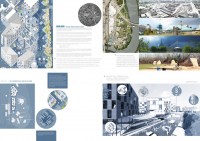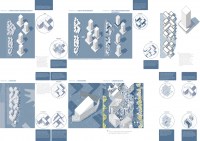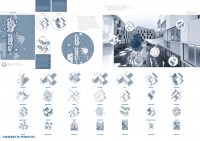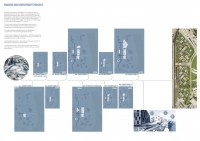The Forks, located at the junction of the Red and Assiniboine rivers, has been a meeting place for over 6,000 years. Indigenous peoples traded at The Forks, followed by European fur traders, Scottish settlers, railway pioneers and tens of thousands of immigrants. For most of the 20th century it was used as an active railyard until the need for it diminished in the late 1980s.
Winner- Urban Design & Architecture Design Awards 2019
Firm | 5468796 Architecture
Category | Urban Planning (Concept)
Team | Emeil Alvarez, Pablo Batista, Ken Borton, Jordy Craddock, Donna Evans, Johanna Hurme, Jeff Kachkan, Stas Klaz, Lindsey Koepke, Kelsey McMahon, Colin Neufeld, Sasa Radulovic, Helia Saadat, Shannon Scott, Hasan Shurrab, Shannon Wiebe, Jenn Yablonowski
Country | Canada
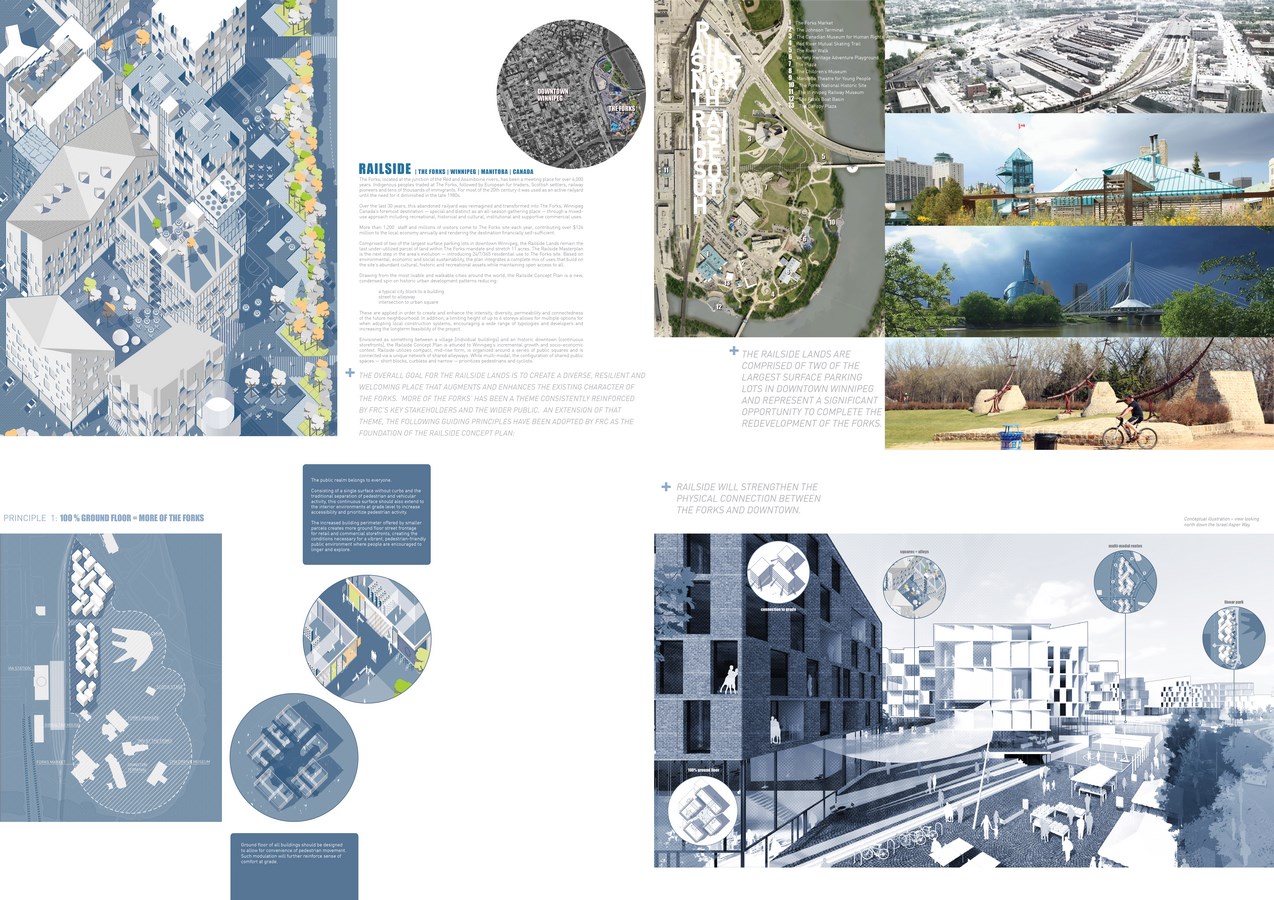
Over the last 30 years, this abandoned railyard was reimagined and transformed into The Forks, Winnipeg Canada’s foremost destination — special and distinct as an all-season gathering place — through a mixed-use approach including recreational, historical and cultural, institutional and supportive commercial uses.
More than 1,200 staff and millions of visitors come to The Forks site each year, contributing over $126 million to the local economy annually and rendering the destination financially self-sufficient.
Comprised of two of the largest surface parking lots in downtown Winnipeg, the Railside Lands remain the last under-utilized parcel of land within The Forks mandate and stretch 11 acres. The Railside Masterplan is the next step in the area’s evolution — introducing 24/7/365 residential use to The Forks site. Based on environmental, economic and social sustainability, the plan integrates a complete mix of uses that build on the site’s abundant cultural, historic and recreational assets while maintaining open access to all.
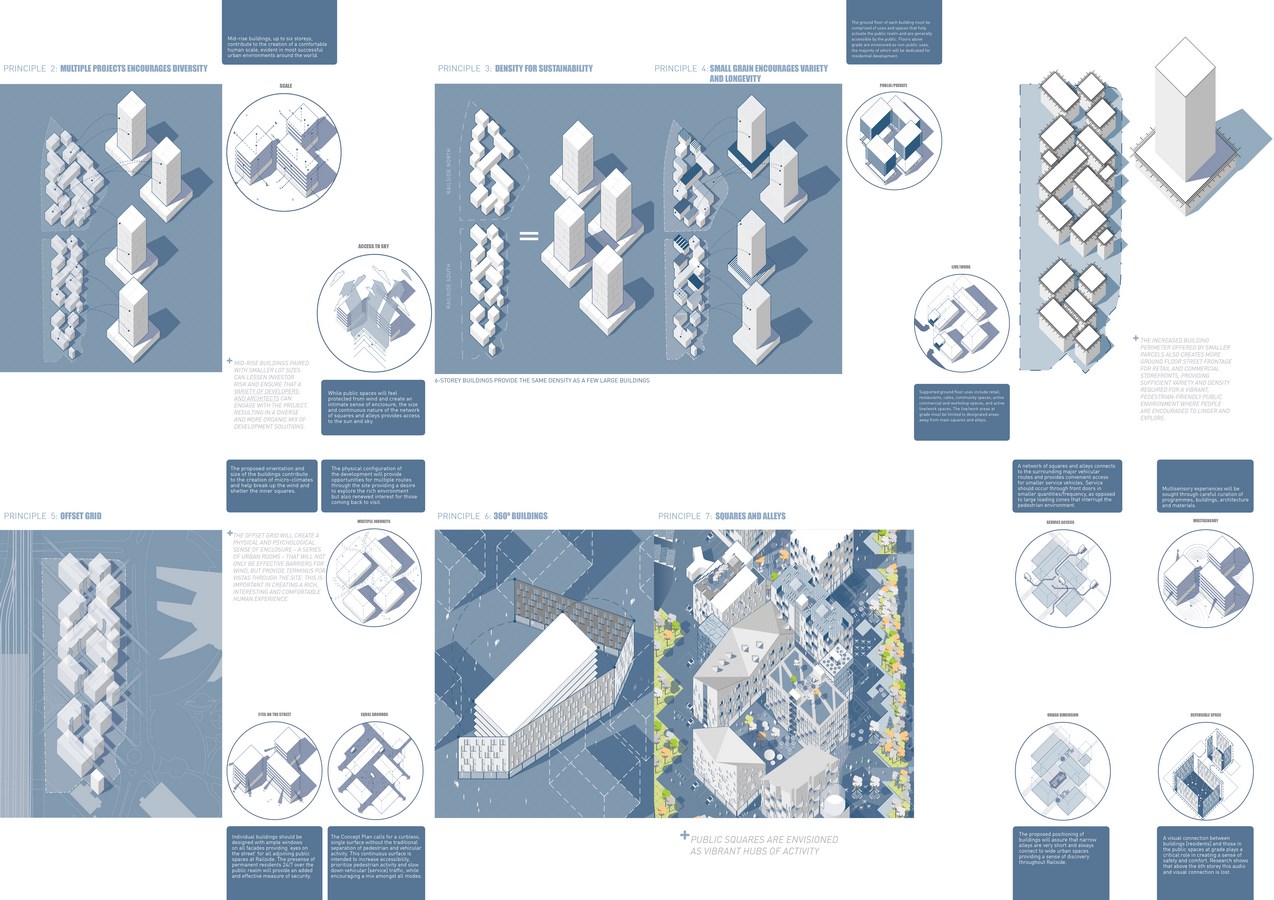
Drawing from the most livable and walkable cities around the world, the Railside Concept Plan is a new, condensed spin on historic urban development patterns reducing:
- a typical city block to a building
- street to alleyway
- intersection to urban square
These are applied in order to create and enhance the intensity, diversity, permeability and connectedness of the future neighbourhood. In addition, a limiting height of up to 6 storeys allows for multiple options for when adopting local construction systems, encouraging a wide range of typologies and developers and increasing the longterm feasibility of the project.
Envisioned as something between a village [individual buildings] and an historic downtown [continuous storefronts], the Railside Concept Plan is attuned to Winnipeg’s incremental growth and socio-economic context. Railside utilizes compact, mid-rise form, is organized around a series of public squares and is connected via a unique network of shared alleyways. While multi-modal, the configuration of shared public spaces — short blocks, curbless and narrow — prioritizes pedestrians and cyclists.
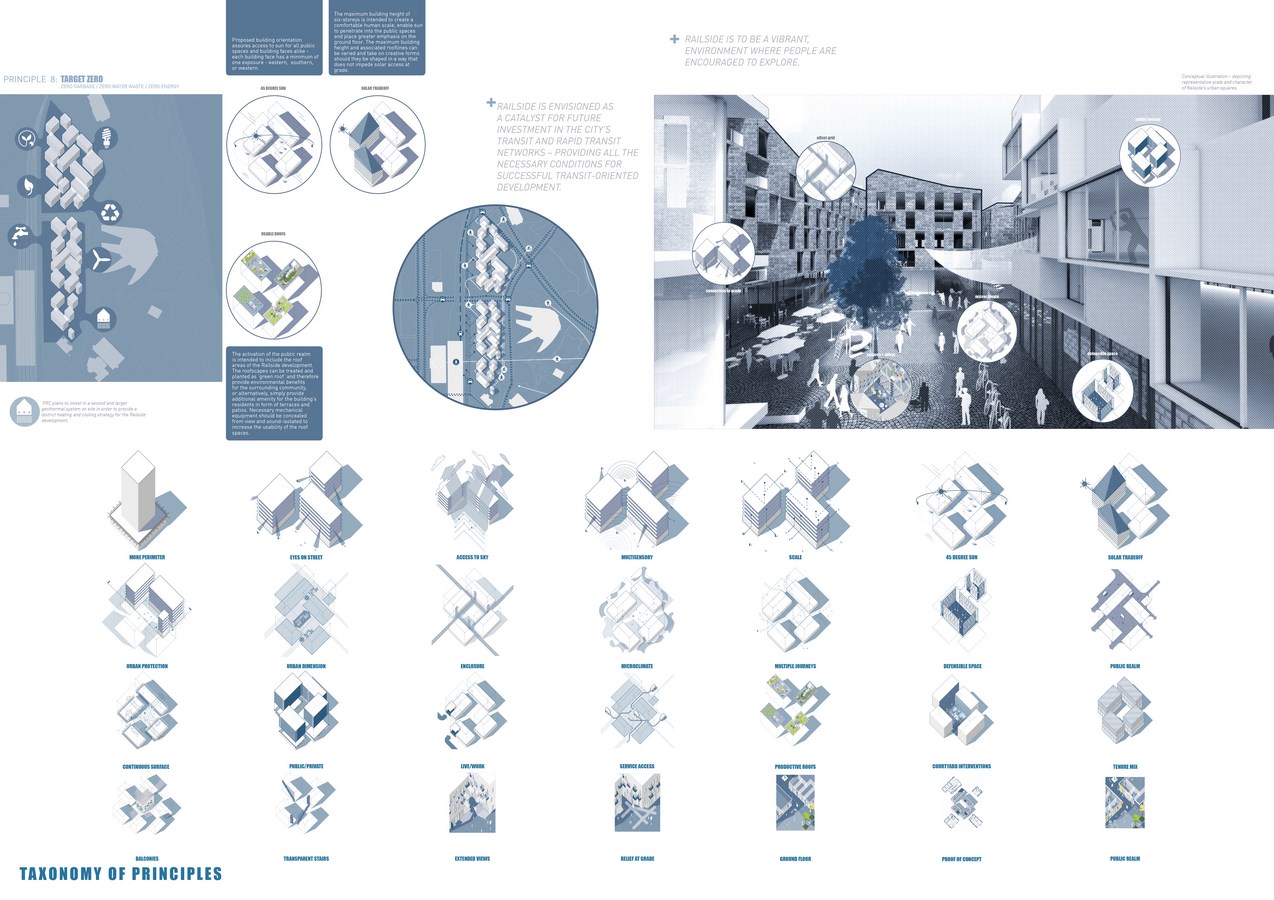
The overall goal for the Railside Lands is to create a diverse, resilient and welcoming place that augments and enhances the existing character of The Forks. ‘More of The Forks’ has been a theme consistently reinforced by the clients, key stakeholders and the wider public. An extension of that theme, the key Guiding Principles presented on the boards have been adopted by the client as the foundation of the Railside Concept Plan.
5468796 Architecture Inc. with a collaboration from Scatliff Miller Murray




